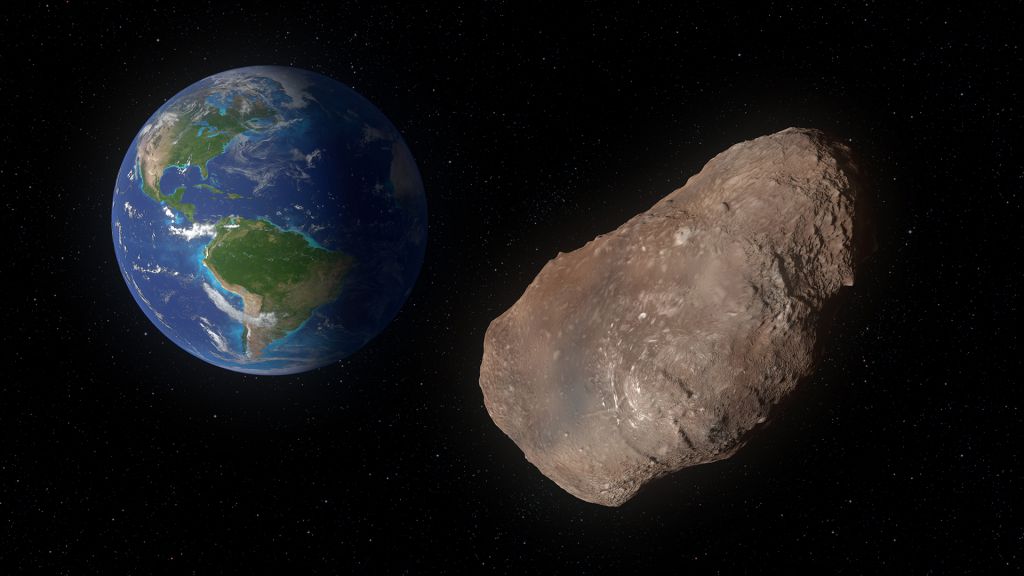Pyramid-Size Asteroid to Hurtle Past Earth (Again)
Don't mind me, just passing through.

Another day, another pyramid-size space rock barreling past Earth.
This time, the fast-moving visitor's name is 2019 SX5, and it's expected to pay our cosmic neighborhood a visit tonight (Oct. 10). SX5 is estimated to measure as much as 459 feet (140 meters) in diameter, about the height of the Great Pyramid of Giza. It's traveling at a blistering 49,000 mph (78,900 km/h) and will reach its closest point to our planet at around 11:07 p.m. GMT (7:07 p.m. ET), according to NASA's Center for Near Earth Object Studies (CNEOS).
However, "close" by space standards is by no means near enough that the rock will pose a threat to Earth. At its nearest, the hefty object's trajectory will carry it to a distance of more than 4 million miles (6 million kilometers). To put that into perspective, the moon orbits about 238,000 miles (380,000 km) from Earth, and the closest planet, Venus, is about 25 million miles (40 million km) away from us.
Related: Photos: Russian Meteor Explosion
Another pyramid-size asteroid cruised past Earth in July. And recent reports may make it seem like there's a massive asteroid — car-size, football-field-size, skyscraper-size — speeding past us every few days. In fact, there usually is, according to CNEOS data. Space is littered with rocky debris and particles of all sizes; 100 tons (90 metric tons) of space dust bombards Earth each day, though most pieces are no bigger than a grain of sand, according to NASA's Jet Propulsion Laboratory at Caltech.
But the risk of impacts with Earth from large near-Earth objects, or NEOs, is very low. Asteroids the size of SX5 collide with Earth only about once every 10,000 years, and asteroids bigger than 0.6 miles (1 km) strike the planet about once every 100,000 years, CNEOS says.
By identifying and tracking large NEOs over time, space agencies can determine whether these rocks might be on a collision course with our planet. Currently, CNEOS estimates that the biggest impact risk is from an object named 29075, measuring nearly 1 mile (1.3 km) in diameter and traveling at over 31,000 mph (nearly 50,000 km/h) — though, it isn't due to arrive until 2880.
Get the Space.com Newsletter
Breaking space news, the latest updates on rocket launches, skywatching events and more!
But if you're worried about the next asteroid flyby turning apocalyptic for Earth, you should calibrate your concern; there are plenty of other, more-mundane dangers that pose a far higher risk, according to CNEOS.
"The threat to any one person from auto accidents, disease, other natural disasters and a variety of other problems is much higher than the threat from NEOs," CNEOS says.
- Doomsday: 9 Real Ways Earth Could End
- Black Marble Images: Earth at Night
- Top 10 Ways to Destroy Earth
Originally published on Live Science.

Join our Space Forums to keep talking space on the latest missions, night sky and more! And if you have a news tip, correction or comment, let us know at: community@space.com.











